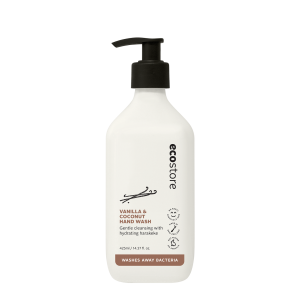
In part 3 of the ecostore e-bike guide, we’re going to cover what to look for when taking a test ride, some riding etiquette, and how to treat your battery so it goes the distance.
If you haven’t read 'Part 1' and 'Part 2' of our e-bike guide, feel free to take a look before you read the tips below.
Take a test ride
Test ride a variety of e-bikes, looking at different styles and motor systems. Try to ride them a few kilometres on varied terrain, to get a sense of how you might get to work, for example.
Before riding any e-bike on the road
E-bikes are heavier than the regular bikes you’re used to. This means they handle differently too. To get used to riding an e-Bike, start somewhere where you have a bit of space and have a go before heading out onto the road.
- Get used to how it handles. It’ll be heavier than a regular bike, prepare for it to handle differently. Go easy on corners while you get used to it, particularly if the motor is in the front wheel and the bike has a throttle. Try out adjusting the power assist settings, as you test how the e-bike starts, stops, turns and navigates obstacles.
- Check the tyre pressure. Get used to riding with the recommended tyre pressure. Under-inflated tyres will make you go slightly slower and could possibly result in a blowout.
- Test the brakes. Do the brake settings fit your style? Try them out on a flat surface to get used to how they feel and how well they stop you when moving at various speeds. If you haven’t ridden any sort of bike for a while, get used to applying the rear brake first.
- When starting off at an intersection or up-hill, use a low gear. You need to start pedalling before assistance kicks in, so be prepared for the surge in power and acceleration.
- Consider your speed. You’re likely to be going faster on an e-bike than a regular bicycle, and other road users might not be expecting your speed. In slower city traffic, be prepared to “claim the lane” as you may be moving as fast as other traffic.
E-bike etiquette
E-bike etiquette is a hot topic among cyclists, communities and local authorities. While you don’t need a license to ride an e-bike, it’s always a good idea to exercise extra courtesy and common sense when using the road.
- Stick to the rules. As well as brushing up on local speed limits and road rules, try to find out any specific laws that apply to e-bikes. In New Zealand and Australia it’s a legal requirement to wear an approved helmet when riding a bike.
- Stay safe out there. Normal road safety apples here: scanning well ahead, clearly signalling your turning, land changing and stopping. If you haven’t ridden a bike in traffic for a while, remember you are not protected by large pieces of metal and airbags. Look out for cars turning in and out of side roads and driveways. This will help to protect you and other road users.
- Know where you can ride. It’s a good idea to check out likely routes before you ride them, including cycle lanes, bus lanes and transit lanes. If your routes don’t have cycle lanes, understand who will be sharing bus and transit lanes with you. This could be anything from double decker buses to taxis, motorcycles and mopeds. You may want to alter your regular route to work if there’s an alternative with more cycle lanes.
- Pass with care. You may or may not be used to passing other cyclists. Get into the habit of looking behind you for oncoming traffic, signalling before pulling out and giving other cyclists plenty of space.
- Share the shared path. If you’re lucky enough to have scenic shared paths where you ride, enjoy the slower, more relaxed pace. Put your e-bike on a low power setting and keep things mellow, so it doesn’t make other users feel anxious or put anyone at risk.
How to get the best from your e-bike battery
You don’t want to ever get short while you’re off on an adventure far from home. Here are some quick tips to prolong the battery’s range and lifespan.
- Use the right mode. Switch through the e-bike’s modes to maximise efficiency and keep you in exercise mode. On roads, use lower and mid settings for climbs hit the turbo. Some e-bikes have on-screen power output readings, but it’s safer to avoid using these when you’re in traffic.
- Reduce weight. The combined weight of the rider and the bike is the biggest factor affecting battery range. Removing unnecessary weight from your bag, panniers and bike will help a bit though, especially on the uphill.
- Use the right tyres. Rolling resistance - influenced by tyre compound, pressure, width and tread pattern - will affect the range you get from a charge. Higher pressures mean less rolling resistance but affect the control. Some solid and semi-solid tyre inserts (aimed at reducing punctures) may create more rolling resistance, which reduces range.
- Ride smoothly. Turning the pedals at a smooth, steady pace helps prolong range. As does choosing the right gears. Using lower gears on hills relieves some of the load on the motor and preserves the charge. Try flowing gently through turns instead of speeding up to a corner, braking hard and starting again.
- Store it correctly. Manufacturer Bosch recommends storing e-bike batteries below 30°C, and out of blazing sunshine. Ideally, leave it 30-60% charged while storing for extended periods, rather than empty or fully charged.
- Keep it dry. Avoid jet washing an e-bike motor or battery. But a light spray with an electrical contact cleaner on the terminals will help to maintain good energy transfer and prevent corrosion.



